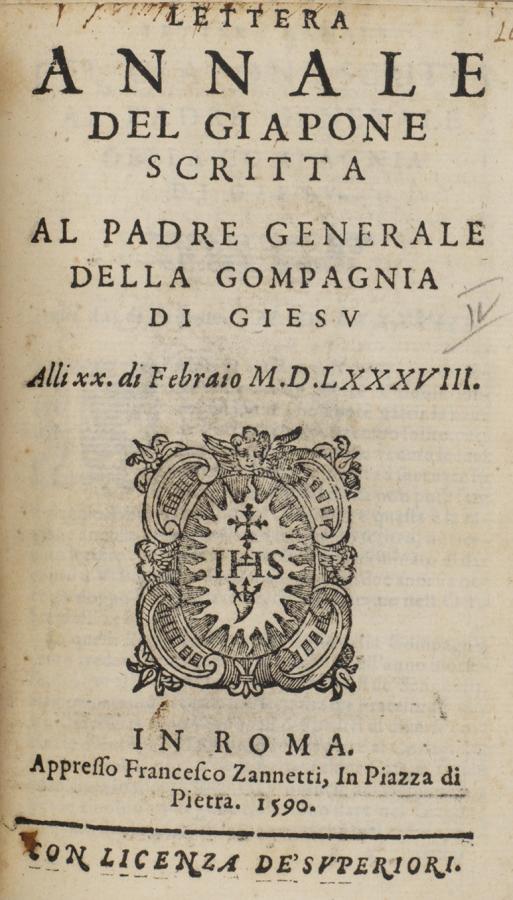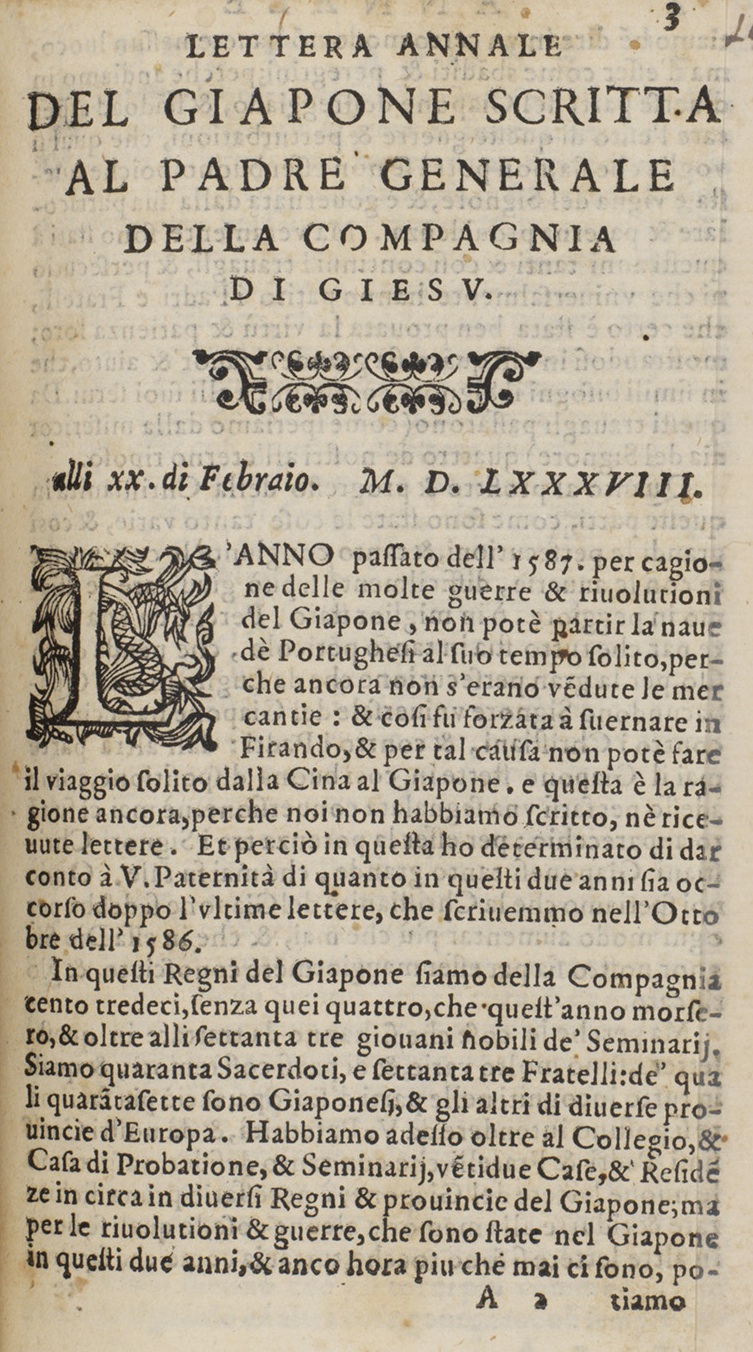Lettera annale del Giapone scritta al padre generale della Gompagnia di Giesu alli xx. di Febraio M.D.LXXXVIII.



Ignatius of Loyola, the Basque soldier who became a priest and then ultimately the founding General of the Society of Jesus, also devised ingenious ways of administering his far-flung men. He compelled each house of the Society and each superior of those houses to communicate with the head office in Rome, by way of letters and reports. Where possible, every few years, an individual was chosen as the procurator to return to Rome and describe in person what was happening on the mission. At other intervals another Jesuit was appointed the Visitor to make an official journey around the mission and encourage those there, assist them where possible and also report on the activities taking place.
The letters were known as annual letters. Several copies of them were usually written and sent on different vessels via different routes, so that there was a reasonable guarantee that at least one copy would actually reach its destination. Once the letters reached Europe, they would be read by a senior Jesuit, who would communicate its contents to the General (who himself most likely read the letters, or at least a part thereof). Compilations of the letters would be made, and various stages of redaction would take place, such as removing pieces of information that did not seem interesting or more concerned the internal affairs of the Jesuits, and finally collections of these compilations would be published.
For more than sixty years the French Jesuits in Paris produced a series of these kind of edited works – the Curious and Edifying Letters written by Jesuit missionaries – and there was also a similar type of work published in German (Allerhand so lehr- als geist-reiche Brief), which also ran for over thirty years. These provided edited versions of fascinating and important primary writings about Asia.
It was also not uncommon, especially during the early years of the Jesuits’ work in Asia, for some of the actual letters to be published as discrete separate volumes.
The present small volume – Lettera Annale del Giappone scritta al Padre Generale della Compagnia di Giesu, alli xx.di Febraio M.D.LXXXVIII (The annual letter from Japan written to the Father General of the Society of Jesus, February 20, 1598) – was published in Rome by the printer Francesco Zannetti, in 1590. Zannetti’s printery was in the Piazza di Pietra and given this was close to the Jesuits’ Roman College it may explain why he was chosen.
The years being described were tumultuous ones. In fact, Luís Fróis (1532-1597, in Japan since 1563), the missionary who wrote this letter, begins by stating, “because of the many wars and revolutions in the year just passed [as in 1587] the Portuguese vessel was not able to visit.” Furthermore, in 1587, Toyotomi Hideyoshi had ordered Jesuits to leave the country and began persecuting Christians. Fróis describes the state of the church and the Jesuit works at this time.
This letter is an important text for the history of Japan, and for the history of east-west relations more specifically. A respected historical website (Laures Rare Book Database Project & Virtual Library) states that there are only six extant copies of this letter around the world. The Burns Library copy is therefore the seventh and thus having a digitized version of this is helpful for scholars internationally.
How to Use the Online Books
A help page explaining the difference between the book readers and how to use the scholarly search.
Related Items

Alessandro Valignano (1539-1606) was an Italian Jesuit priest and the architect of the missions in the east. He was Ricci’s novice master.

Both the Portuguese and Dutch traders utilized the port of Nagasaki as their entry point into the Japanese market.
